On Sunday, January 22nd, after three days of uncertain wait due to bad weather and very rough sea, we could at last see the sun shining again in the city of Préveza. We arrived at the beach early in the morning, and we found the magnificent CS Teliri surprisingly close to us, ready to start the operations.
The voyage started more than a week before, on Friday, January 13th when we witnessed the first landing of the cable in Crotone.
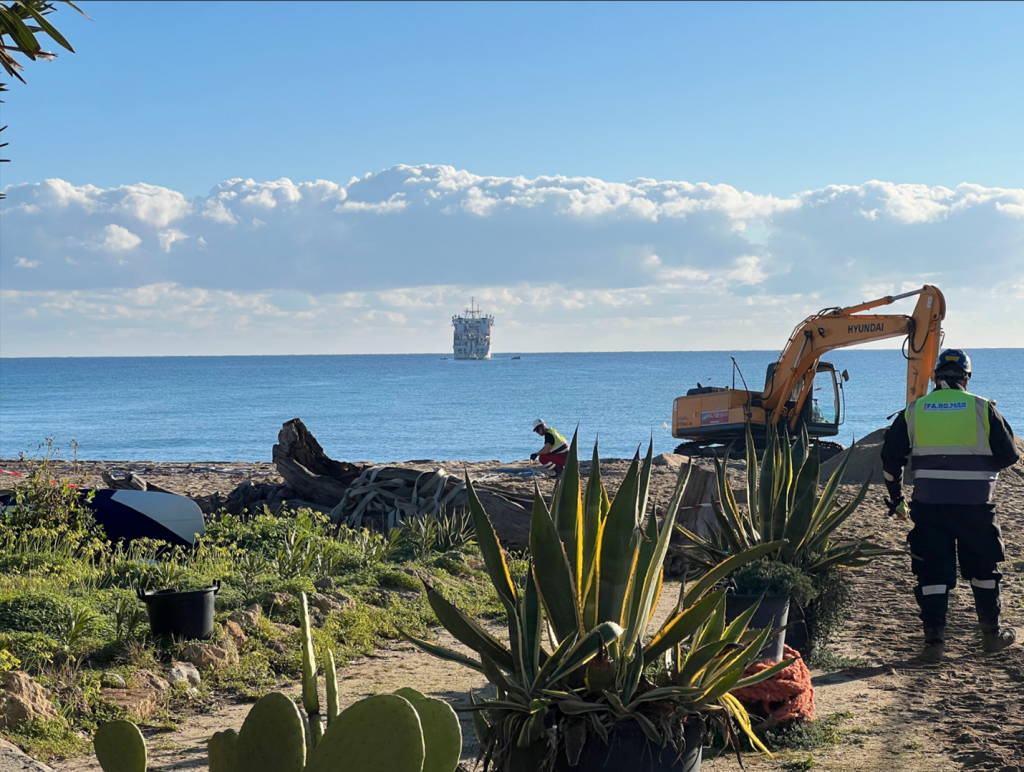
The shore-end operation in Crotone
At 8 am the CS Teliri was already set up in position around one kilometer from the shore. The beach had been prepared by the Faromar team in advance, fencing a safety area from the beach manhole (BMH) to the sea shore.
A deep trench had been dug previously in the sand between these two points. Divers also surveyed and prepared the underwater path from the vessel to the shore, identifying and removing any debris.
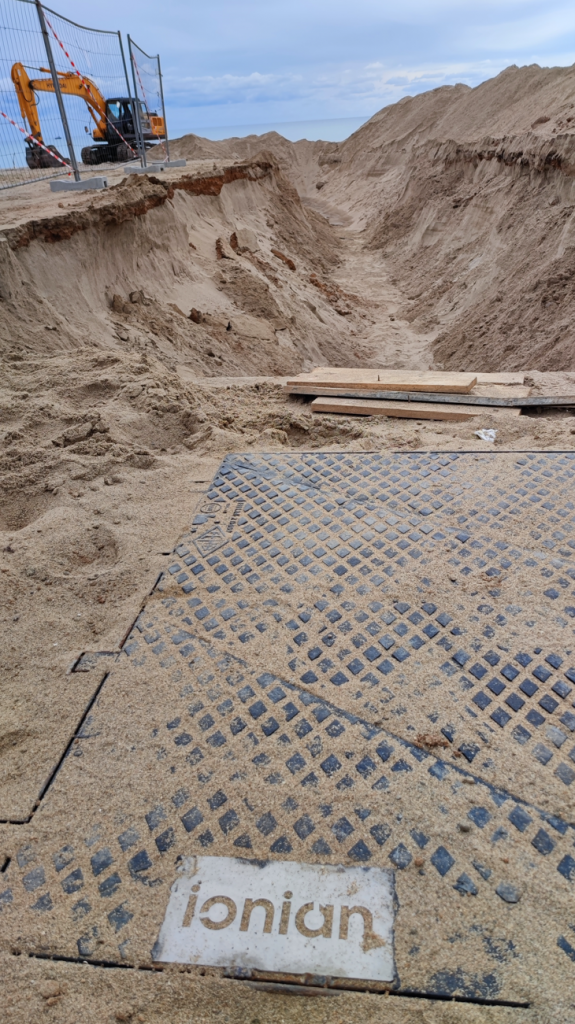
A work boat started the operation by hauling the floating line from the vessel to the beach. Payout of the cable was coordinated between the vessel and the excavator on the beach by the beach-master. The cable was arriving to the shore and this was very visible as buoys were attached to it at regular intervals. This is used to ensure a proper alignment of the cable before the buoys are cut and the cable is laid on the sea bed.
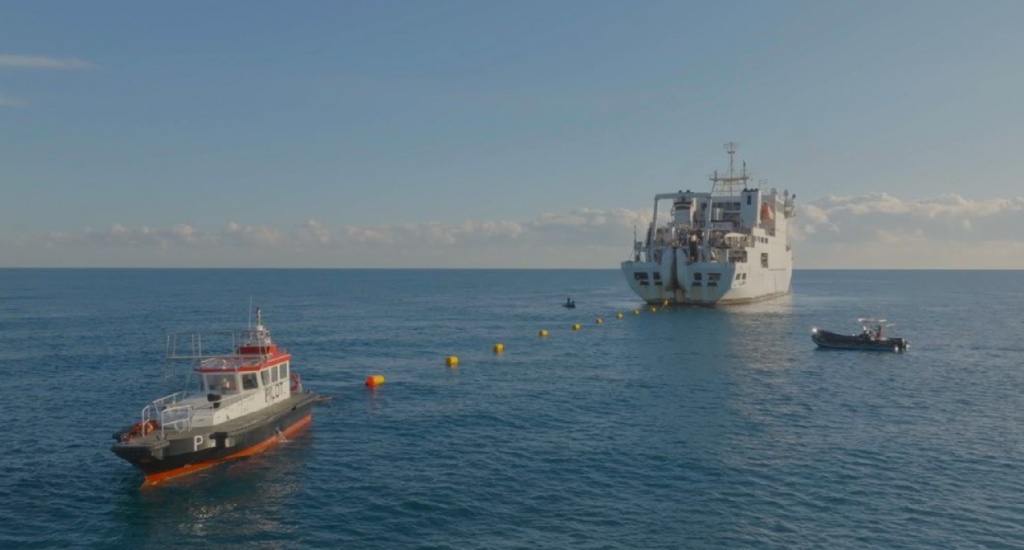
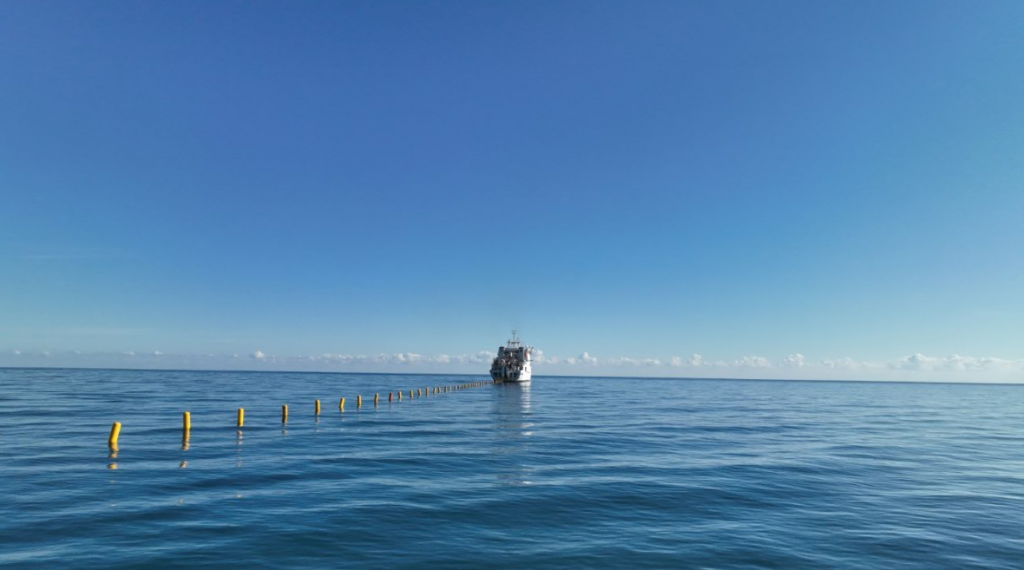
The shore end rope was then attached to an excavator through a quadrant with a large enough bending radius, to pull the cable ashore.
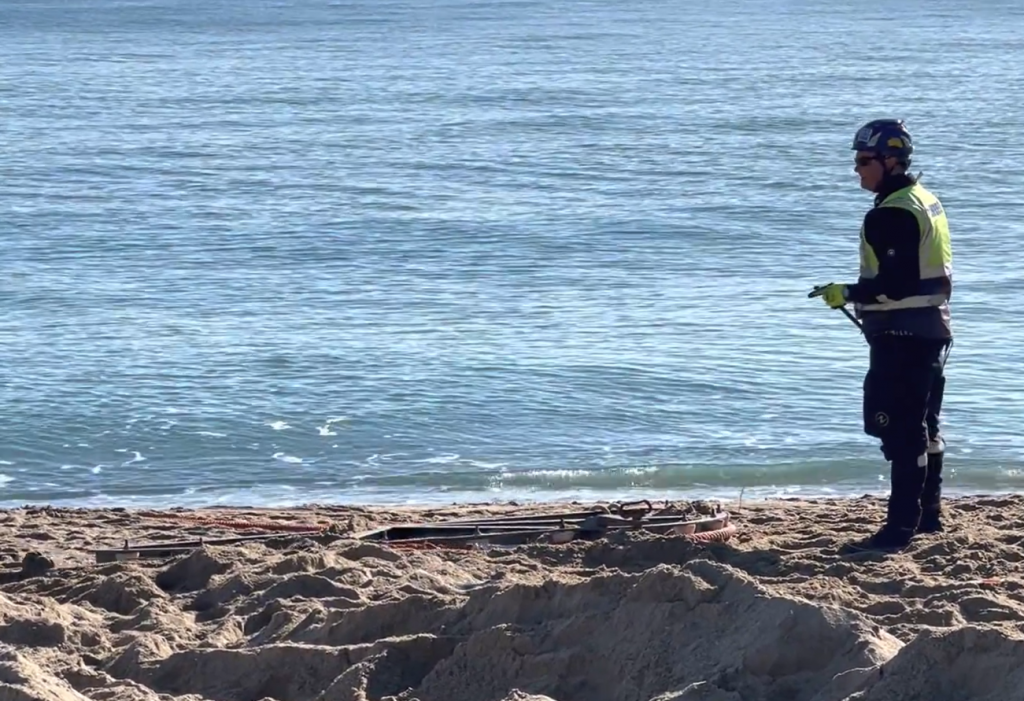
The messenger cable end was then attached to the excavator that pulled it in parallel to the seashore until finally the first buoy (the orange “signaling” buoy, distinct from all the others), indicating the start of the actual IONIAN cable arrived. Once sufficient cable was ashore to reach the manhole plus some additional slack, and seeing the cable was aligned, the divers cut the floats off the cable.
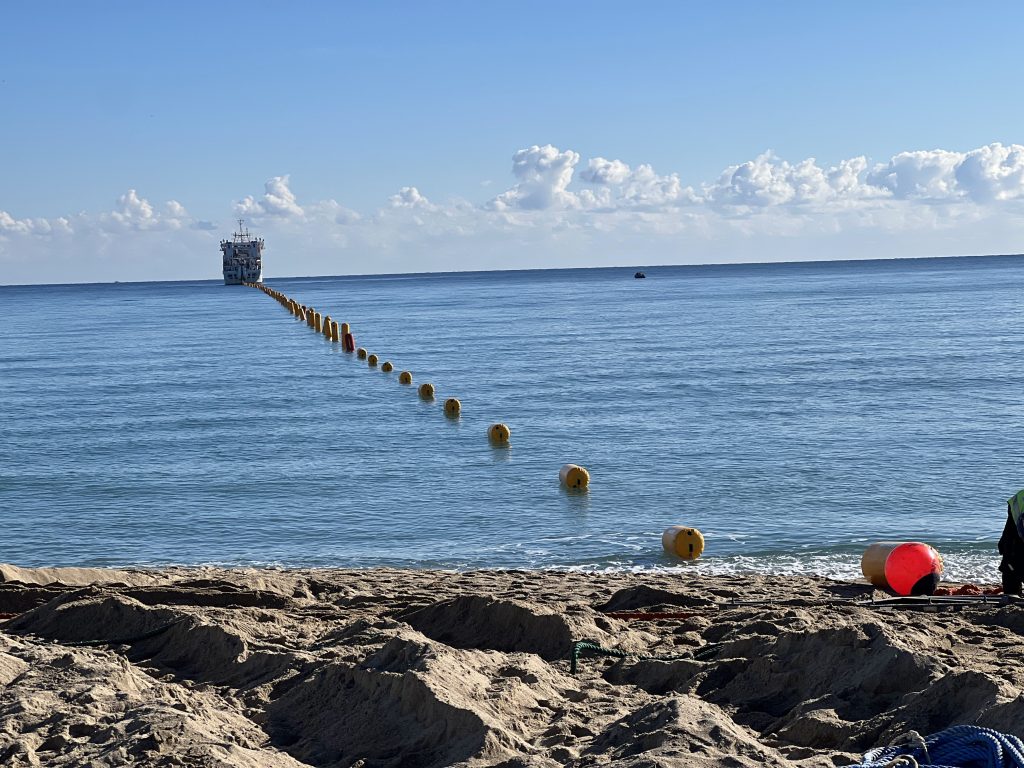
The cable that was resting parallel to the shore after being pulled by the excavator was then brought to and inserted in the beach manhole through one of the four front holes (the BMH is designed with sufficient room to accommodate up to four submarine cables).

The additional cable slack was then used to bring the cable through the manhole up to a van with testing equipment, where the cable end was prepared to make measurements to check the integrity of the fiber strands already laid and stored in the tank of the CS Teliri (i.e., all the cable length).
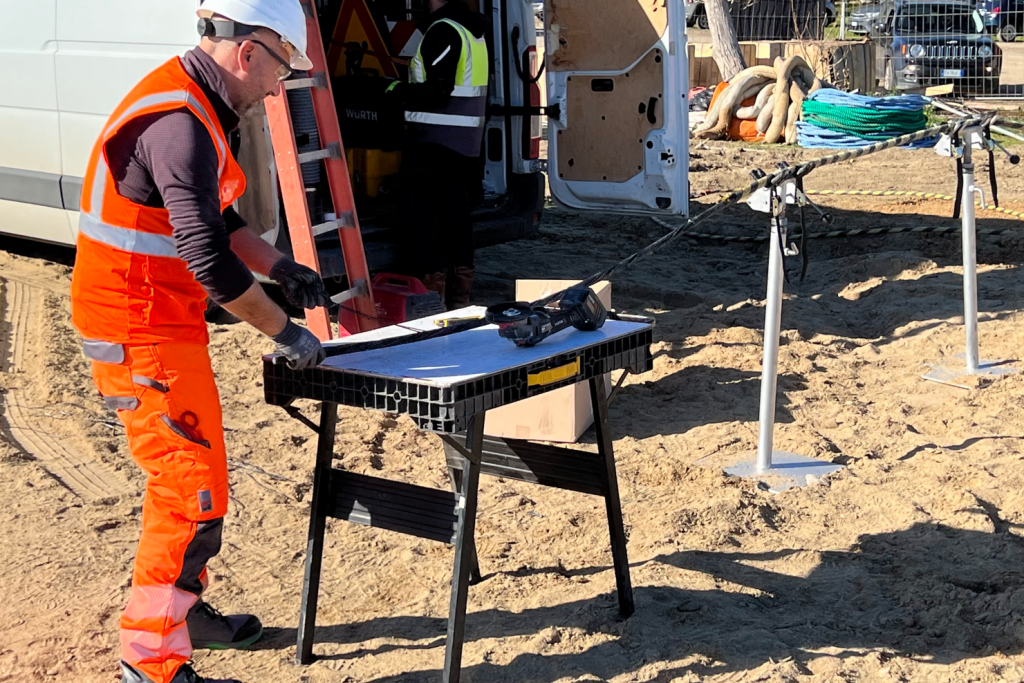
Finally, on the following days, the IONIAN cable was jointed in the BMH with the terrestrial segment connecting it to the Cable Landing Station.
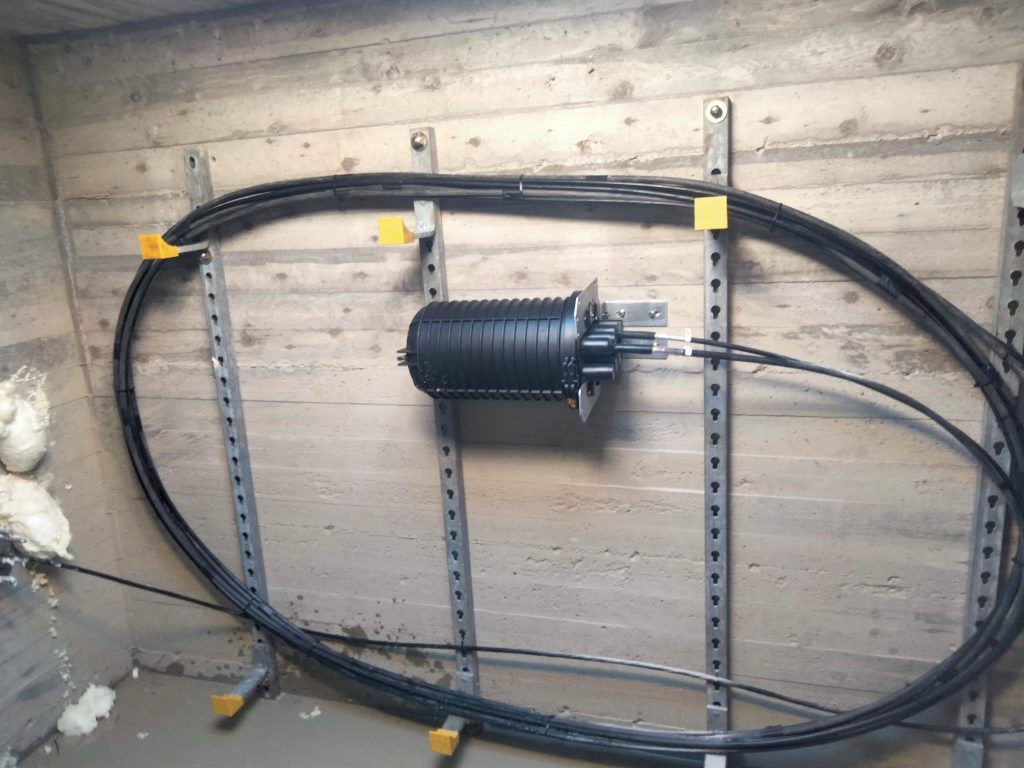
Previous posts:
The IONIAN System – the marine survey (2)
https://islalink.com/2022/04/23/the-ionian-system-the-marine-survey-1/
The IONIAN System – The desktop study
The IONIAN system – The submarine route
The IONIAN system – Why the IONIAN System?

